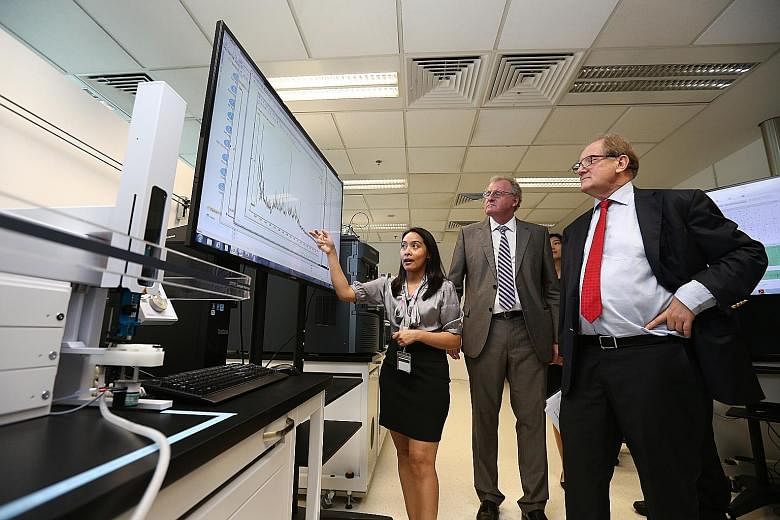Diabetes affects nine per cent of adults worldwide; but it differs between individuals as well as between groups. That is why more targeted treatments are needed for patients in Asia.
Hence, a new $9 million research facility launched yesterday will look into how physical traits and environmental factors such as lifestyle and diet - among Asians - can affect those who suffer from diseases such as diabetes.
Funded by the Nanyang Technological University (NTU), the Singapore Phenome Centre will be housed within the university's main campus. It is the first of its kind in Asia and the second in the world.
The 500 sq m centre will house state-of-the-art facilities and collaborate on research projects with the only other phenome centre in the world - at Imperial College London, in Britain .
A phenome is a set of a living thing's phenotypes, or physical traits. In humans, they include traits such as eye colour and height.
Professor James Best, chair of the Singapore Phenome Centre, said the facility hopes to work with clinicians here and come up with more targeted treatments for diabetics in South-east Asia.
"Diabetes is a very varied disease. What is common among patients is a high blood glucose level but, beyond that, it is very different from one individual to another.
"Even between the different ethnic groups in Singapore, there are differences in diabetes," said Prof Best, who is also dean of NTU's Lee Kong Chian School of Medicine.
Also, in South-east Asia, those diagnosed with diabetes tend to be of lower weight than those in the West. Complication rates are also higher.
The centre has already started several research projects, including two on the complications of diabetes done in partnership with Khoo Teck Puat and Tan Tock Seng hospitals.
Biological chemist Jeremy Nicholson, who heads the £10 million (S$21.7 million) phenome centre, in Britain was at the launch.
He said having such centres means that gene and environment interactions around the world can be looked at more closely and compared among different populations globally.
The new centre comes under NTU's new life sciences research cluster, which was also launched yesterday.
Called the NTU Integrated Medical, Biological & Environmental Life Sciences Cluster, it will act as an interdisciplinary platform to study the link between health and the environment.
It comprises the Lee Kong Chian School of Medicine, NTU's School of Biological Sciences and Singapore Centre for Environmental Life Sciences Engineering.


